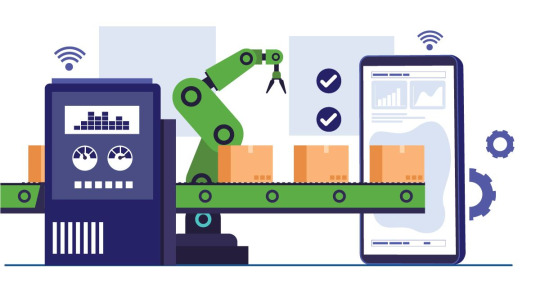Text
9 Must-Have Features for Your Contract Management Software in 2023

Contracts are one of the foundational elements of a stable business operation. They form the basis on which any business relationship is formed. Thus, contract management is important for any enterprise regardless of industry or size.
With enterprises growing fast, powered by modern technological advancement, contract management has grown exponentially from what it used to be. A cloud-based contract management system helps businesses avoid manual contract procedures and manage them effortlessly.
Most businesses invest in contract management software without analyzing what features they need. Even though you may have good contract management software features, poorly negotiated and managed contracts could negatively affect business relationships.
Do your contract management software features align with your contracting requirements? Are your contract management software’s features simplifying contract management? Is there any room for improvement?
If you’re looking to revamp your existing contract management system or deploy a new automated contract management system, it is essential to understand the business needs and check the features that would fulfil the requirements.
Read More : https://www.vuram.com/blog/nine-features-your-contract-management-software-must-have-in-2022/
➤ Next best reads for you:
Blogs:
5 Ways Contract Lifecycle Management Mitigates Contract Risks & Costs
5 Signs You Need A New Approach To Contract Management
10 Reasons Why You Shouldn’t Ignore Contract Management System
News:
Adopting an empathy-first approach to nurture equity
Rising star recognition from ISG provider lens
Transforming customer onboarding with hyperautomation
#Contract Management#Contract Management Software#Contract Management Features#Contract Management System
0 notes
Text
How to Evaluate a Process for RPA When Implementing the RPA Solutions in Businesses

Every enterprise is eyeing on implementing RPA solutions tools; thanks to the benefits of robotic process automation. According to Statista, the forecasted RPA market value for the year 2023 is worth more than $10 billion. Despite the software bots being deployed like hot cakes including IT, service sector, and various verticals, as with any technology, implementing RPA solutions in businesses comes with its own sets of challenges. Companies that do not deep dive before implementing RPA are in for at least a few stumbling blocks; in some cases, they can potentially fail. However, this is not due to an inherent flaw in the technology but due to the inefficient methodologies and myths about the technology.
Take A Step Back – Why Does Your Organization Need RPA?
Be clear about your objectives and how you would like to utilize RPA solutions in your organization. According to a 2017 HFS Research, 41% of the research sample haven’t implemented RPA solutions because they have not determined business cases. These questions can help you think it through:
What would you like to achieve by implementing RPA solutions in your business?
Are there any processes that do not need a human intervention? These can be easily automated in an unattended way.
Are your employees constantly doing a clerical task that doesn’t need judgment?
Read More : https://www.vuram.com/blog/things-to-evaluate-before-implementing-rpa-solutions-in-businesses/
➤ Next best reads for you:
Blogs:
Robotic Process Automation: How RPA Helps Insurance Companies
Debunking The 5 Common Myths Surrounding RPA
RPA: Identifying The Right Process For Automation
News:
Hyperautomation trends to watchout in 2022
Adopting an empathy-first approach to nurture equity
Rising star recognition from ISG provider lens
0 notes
Text
5 Must-Have Skills of a Business Process Management Consultant

No business can run without processes. These may vary in complexity, scale, scope and criticality but are crucial elements of day-to-day operations. Without well-rounded and optimized processes, businesses always stand the risk of losing out on gains, dealing with inefficiencies and unsatisfactory results.
Many enterprises let ‘haphazard’ processes run, and while they may not hamper business operations, they can bring about crippling effects when ignored for long. This is why it’s vital to incorporate Business Process Management into as part of the ongoing business practices to improve efficiencies, optimize resources, and reduce unnecessary waste. And it’s even more vital to get it right!
Why Do You Need a Business Process Management Consultant?
BPM has a broader reach than mere implementation of technology; it involves people, systems and processes, requiring an understanding of how these work together. If not properly executed and carefully managed, it can yield less than satisfactory results and minimal gains. Business process management works best when driven by an experienced business process consultancy supported by Business Process Management Software that can analyze the business, identify issues and recommend the changes needed to get the best returns.
Read More : https://www.vuram.com/blog/5-must-have-skills-of-a-bpm-consultant/
➤ Next best reads for you:
Blogs:
5 Tips to Better Manage Workplace Efficiency using BPM
Accelerating Digital Transformation: How RPA And BPM Work Better Together?
2020 And Beyond: Top 5 Trends Shaping The Future Of BPM
News:
Transforming Banking Services With Hyperautomation
The Author And Researcher Among Us
Making A Difference Among Communities Impacted By The Pandemic
0 notes
Text
Why Enterprise Contract Management Software Is Crucial for Your Business Growth?

Regardless of the type or size of business you run, one aspect that is central to your enterprise’s functioning is contracts. From creating a contract that includes defining obligations, drafts, and negotiations, to overseeing the all-around performance of a contract term, Contract Management is the cornerstone of every relationship that an enterprise has with its stakeholders like customers, suppliers, and partners.
Given its importance in everyday business operations, an efficient contract management workflow has long-term value for your enterprise. The onus of guiding the entire contract lifecycle is on good enterprise contract management software, which ultimately makes or breaks your organization.
Need for Enterprise Contract Management Software
The role of contract management has evolved in today’s digital world. The contract generation and management process are not just about filling documents anymore. It entails understanding all the aspects of the contract lifecycle to extract and make sense of the data. Recently, enterprise contract management software has evolved from just another record-keeping system to enterprise-grade solutions, creating robust contract management workflow, automating contract lifecycle end-to-end, and reducing manual effort and human errors.
Whereas traditional contract management tools had no means to tackle the complex structure of a contract, a contract management system comes with a modular and flexible environment to streamline contracting.
A right contract management system comes with a wide range of features, including smart contract workflow templates, digital signature, centralized contract repository, and contextual search to maximize contract performance and mitigate risk.
Read More : https://www.vuram.com/blog/why-contract-management-software-is-crucial-for-your-business-growth/
➤ Next best reads for you:
Blogs:
Why Is A Contract Management Solution Important For Organizations?
Why Hospitals Need A Tailored Contract Management Solution?
What BFSI Industries Need to Check Before Selecting a Contract Management System
News:
Celebrating Vuram Global Wellness Month
Boosting Sustainability Leveraging A Human-Digital Workforce
The Future of Hyperautomation As Technologies Improve
#Contract Management#Contract Management Software#Contract Management Solution#Contract Management System
0 notes
Text
The Rise of Hyperautomation: What Makes It the Top Technology Trend of 2022?

The year is 2022; automation is no longer a far-fetched vision and is witnessing rapid adoption across several industries, right from healthcare to manufacturing. Technologies like RPA and AI are making intelligent automation a reality where bots can now perform tasks without the need for complex codes, thanks to the pandemic that has accelerated the rate of digital transformation across industries.
Automation has taken over mundane, repetitive tasks and has made employees’ lives easier while boosting productivity significantly. Automation has now found its foothold everywhere. But there’s more to come!
Technological evolution has now ushered in a new era of automation – one that focuses on not just mimicking and augmenting human capabilities but one that can bring about superhuman capabilities. According to a leading industry analyst firm, there will be significant disruption and opportunity brought in over the next five to ten years – and leading that change will be hyperautomation. Interestingly, hyperautomation has been ranked among the top 10 strategic technology trends of 2022 by leading industry research and advisory firms. As the name suggests, Hyperautomation takes typical automation a step ahead.
Why has this suddenly been hogging the limelight in tech circles? Let’s find out.
Read More : https://www.vuram.com/blog/the-rise-of-hyperautomation-what-makes-it-the-top-technology-trend-of-2020/
➤ Next best reads for you:
Blogs:
Top 10 Benefits Of Hyperautomation And How It Will Help Enterprises
Appian in Action: 5 Real-world Examples of Transformation across Industries
10 Reasons Why Low-Code Is The Future Of Application Development
News:
Accelerating Digital Transformation With Hyperautomation
Driving Digital Transformation Powered By Passionate People
Embracing A Sustainable Approach For People And Operations
0 notes
Text
Robotic Process Automation in Manufacturing Industry

In a world of Industrial Revolution 4.0., Robotic Process Automation in manufacturing is one of the innovative ways manufacturers can leverage to enhance productivity, lower costs and increase customer satisfaction. Industry experts predict that by 2022, around 85% of large organizations will have deployed some form of RPA. Scaling RPA in manufacturing operations can uncover efficient business value.
What Is RPA?
RPA is the use of bots or software applications to perform monotonous tasks without human intervention. RPA’s use spans across different sectors to automate rule-based activities like extracting structured and semi-structured data from documents, data entry, reading and responding to emails, scraping browsers, processing invoices, and more.
What Does Robotic Process Automation Mean to Manufacturers?
RPA helps bring agility in the process and long-term cost savings; it facilitates collaboration between man and machine, reducing errors and wastage, among many other benefits.
McKinsey reveals that at least 87% of manual and routine jobs carried out by manufacturing workers are automatable.
Read More : https://www.vuram.com/blog/get-the-robotic-process-automation-in-manufacturing-industry/
➤ Next best reads for you:
Blogs:
RPA Blog - Insights, Best Practices & Tips
5 Steps To Ensure Smooth Integration Of RPA Into Your Workforce
Robotic Process Automation: How RPA Helps Insurance Companies
How to Evaluate a Process for RPA, When Implementing the RPA Solutions in Businesses
News:
Coronavirus Lockdown: How To Keep Employees Motivated While Working From Home
Humane Bags Prestigious Award By NDSO For Its Humanitarian Efforts And Technology Services
Meet Vuram’s Suresh Kumar: One Of India’s Top HR Minds Who Puts People Over Policies
0 notes
Text
What Is an Incident Ticketing System?

Incidents happen. Let’s put it as simple as that. When they happen, organizations must resolve them quickly so that they do not impact the business outcomes or customer experiences. Manually dealing with incidents can be time-consuming and inefficient, for example, staff receive phone calls, record those in paper forms, and track them with emails and spreadsheets. With a incident ticketing system — also called case management system, service desk, ticketing system, and incident system — organizations can be focused, organized, and efficient.
What Is Incident Ticket?
An incident ticket is a record of an incident or problem reported to an organization's support team, usually through a help desk or ticketing system. It contains information such as the nature and severity of the issue, the affected system or service, and details of any actions taken to resolve it.
Read More : https://www.vuram.com/blog/what-is-an-incident-ticketing-system/
➤ Next best reads for you:
Blogs:
The Low Code Boom: How COVID-19 Has Increased Demand for Low Code Development?
Why BFSI Companies Should Upgrade their Contract Management Software with Low-Code
Low-code, High impact: How it's Driving the New Automation wave During the Pandemic
News:
How Hyperautomation Can Transform SMBs?
Vuram: AI Trend To Watch Out For In 2021
Vuram Awarded As Emerging Company By The Indian Achievers’ Forum
0 notes
Text

The 7 Stages of Contract Lifecycle Management Process
Contracts vary infinitely in types, complexity, length, and terms, right from basic contracts like employment agreements, vendor-supplier agreements, and licensing agreements to critical documents like partnership agreements, bill of sale, procurement contracts, and so on. Managing contracts is a humongous task for organizations. Imagine the efforts put in by a contract management executive, who has to coordinate with multiple departments, create and review contracts, identify opportunities to improve business processes, and provide guidance to teams for contract generation. Besides the biggest daily work responsibility is to - oversee the entire contract lifecycle. Note that contract lifecycle management is different from contract management, though both the terms sound the same.
Contract Management vs Contract Lifecycle Management
As the name suggests, contract management is about managing the A-Z things of contracts, right from drafting, and negotiating to renewals. Contract managers ensure all the contracts are up to date, the deadlines are not missed, and compliance and security policies are taken care of, among other tasks. Whereas contract lifecycle management is all about implementing technology to automate the entire contract lifecycle process. It aims to derive maximum efficiency from a strategic combination of people and technology. Contract lifecycle management eases the complex process, increases accuracy, and improves collaboration, not to mention cost savings.
Read More : https://www.vuram.com/blog/the-seven-stages-of-a-contract-management/
➤ Next best reads for you:
Blogs:
7 Questions To Ask Before Investing In A Contract Management System
Why Financial Services Need To Upgrade Their Contract Management Systems
An Essential Guide To Contract Lifecycle Management
News:
Redefine The Enterprise Landscape With Hyperautomation
Bringing Back Women To The Workforce
Transform Customer Onboarding With Hyperautomation
0 notes
Text

Top 10 Benefits of Automated Invoice Processing
How do you process invoices? You have an accounts payable team that collects these invoices via a PDF or paper and then takes the time to manually sift through the details, verify them, and release the payments. This might work if you have a few invoices to process every month. But what if you have a large number of payment requests from vendors, expense reimbursements from employees, and supply bills, among other invoices?
Think of the time your Accounts Payable division spends carrying out this tumultuous task manually. Errors, delays and wasted time and effort are a given. There’s no denying that even today tried-and-true manual methods of invoicing are still prevalent across the organization, but it’s also impossible to deny that in an increasingly evolving world, it’s necessary to overhaul these primitive methods and embrace the new. This is where automation shows promise.
Here, the benefits of automated invoice processing are many. Automated invoice processing system can eliminate inefficient manual processes that slow down payment releases, reduce processing errors, and provides employees who’re otherwise burdened with the paperwork the freedom to focus on other tasks.
Read More : https://www.vuram.com/blog/top-10-benefits-of-automated-invoice-processing/
➤ Next best reads for you:
Blogs:
10 Features to Watch Out for When Choosing a Low-Code Tool
Build Enterprise‑ready Apps Rapidly With Low Code
Eight Reasons Why Your Enterprise Needs Low Code
News:
Transform Customer Onboarding With Hyperautomation
Transform Capital Markets With Robotic Process Automation
How Low Code Connects People, Technologies, And Data
0 notes
Text

Why Low-Code Is the Future of Application Development : Top 10 Reasons to Know
The requirement and demand for application development will always be on the rise. As newer business opportunities thrive, the need for newer applications will be in demand. But how prepared are the developers to manage this exponential growth? What new roadmaps do they have to match the demand?
The shortage of highly skilled IT resources can impact overall operational efficiency which makes it difficult for firms to deliver business requirements efficiently. Today, every IT company has its own small software firm within itself. With the ever-expanding advent of digital breakthroughs, it has become a challenging task for businesses to chart their success without taking the help of applications that support their internal as well as external functions.
Why Low-Code is the Future?
The future of software development lies in the power of low-code, revolutionizing the way applications are built and empowering businesses to rapidly create solutions with minimal coding expertise. Low-code development represents a paradigm shift, simplifying the software development process by providing visual interfaces and pre-built components. It enables users, regardless of coding expertise, to quickly and effortlessly create applications.
With low code, businesses gain automation capabilities, leading to streamlined processes and increased productivity. Additionally, the visual nature of low-code platforms allows for faster turnaround times, reduces the likelihood of errors, and promotes greater accessibility for a wider range of users.
Read More : https://www.vuram.com/blog/10-reasons-why-low-code-is-the-future-of-application-development/
➤ Next best reads for you:
Blogs:
5 Signs You Need To Invest In A Low-Code Automation Platform
5 Use Cases of Low-Code Automation Across Industries
Democratizing App Development: How Low-Code Enables Anyone to Build?
News:
What Makes Business Intelligence A Crucial Factor For An Enterprise’s Success?
Diversity And Inclusion: Best Practices For An Evolved Workplace
Vuram To Hire 400 More People In 2021
0 notes
Text

Appian in Action: 5 Real-World Examples of Transformation Across Industries
Industry analysts predict that by 2024 at least 65% of all new business applications will be created with high productivity tool sets like low-code platforms. The emerging low-code software development platforms are giving an edge to organizations to compete in the race of innovation. Low-code empowers citizen developers, or people with really minimal knowledge of programming, to build applications within shorter time frames. All one needs to do is draw a flowchart and the platform writes the code for them. Due to its simplicity, low-code has now become the most preferred solution for businesses. In fact, if reports are to be believed, 70% of low-code users who had no experience at all before using this approach, learned it in a month’s time or less.
Appian is one of the best low-code platforms currently in use. If you’re wondering how it can add value to your enterprise, this post is for you. We’ll explore with some real Appian examples about how appian one of the popular low-code platform, helps companies build workflows and powerful, mission-critical applications rapidly with rich visual designs.
Read More : https://www.vuram.com/blog/appian-in-action-5-real-world-examples-of-transformation-across-industries/
➤ Next best reads for you:
Blogs:
Appian Blog - Insights, Best Practices & Tips
10 Reasons Why Appian Is A Leader In The Low-Code Development Space
Appian 20.2: What’s New In The Latest Release Of The Low-Code Platform?
The Low Code Boom: How COVID-19 Has Increased Demand For Low Code Development?
News:
Improving Customer Service With AI And NLP
Transforming The Healthcare Industry With RPA
Empowering Digital Transformation Journey With Hyperautomation
0 notes
Text

2020 and Beyond: Top 5 Trends Shaping the Future of BPM
Businesses evolve, and so does BPM! The year 2020 ushers in a new era laden with opportunities. With an increasing number of enterprises embracing BPM and growing agile to stay on top of rising consumer demands, Business Process Management continues to witness technological innovation and emerging trends that are revolutionizing the space. While some of these BPM future trends have already gained steam and are being adopted, the emergence of new use cases will further augment future BPM applications in 2020 and beyond.
As more companies invest in transforming their enterprise models, it’s evident that the future of BPM industry is only set to accelerate further. So, how will it evolve further? What do the business process management trends experts have to say about its future? In this post, we’ll dive deep into the key trends shaping future BPM in the next decade:
Read More : https://www.vuram.com/blog/2020-and-beyond-top-5-trends-shaping-the-future-of-bpm/
➤ Next best reads for you:
Blogs:
RPA And BPM: How The Twin Power Can Elevate Remote Working Experience?
6 Factors You Need To Consider When Choosing A BPM Platform
5 Must-have Skills Of A Business Process Management Consultant
News:
Work-life Balance and Productivity in a Hybrid Work Model
Adopting Technologies to Future-Proofing Insurance
WNS-Vuram Announces Hiring 500 People by 2022
0 notes
Text

Top 10 Benefits of Hyperautomation and How It Will Help Enterprises
For a few years now, the buzz surrounding Hyperautomation has only gained momentum and Hyperautomation tools have emerged as one of the most promising trends in recent times. Back when automation first made its foray onto the scene, many organizations felt hesitant to adopt it, fearing change, costs involved, and loss of jobs. However, with technology evolution and tried-and-tested benefits of implementing these advancements in the business world becoming evident, enterprises are moving their practices into building smart, high-efficient, and people-centric workplaces.
As the dependency on technology and automation tools increases, so is the need to cope up with the ever-evolving tech landscape and stay abreast with the latest in the space. A step ahead of automation, hyperautomation is a potential growth opportunity for enterprises seeking to keep pace with the dynamic market and get a competitive edge. Many tech leaders are positive that it is the future of work, and to a business, it’s not just a potential opportunity, rather an unavoidable change.
Read More : https://www.vuram.com/blog/top-10-benefits-of-hyperautomation-and-how-it-will-help-enterprises/
➤ Next best reads for you:
Blogs:
Digital Transformation Blog - Insights, Best Practices & Tips
8 Use Cases Of Hyperautomation Across Industries In 2022
10 Reasons Why Appian Is A Leader In The Low-Code Development Space
2020 And Beyond: Top 5 Trends Shaping The Future Of BPM
News:
Incorporating automation to shape a positive and efficient workplace
Building Flexibility And Resilience With Adaptive Automation Solutions
The Future Of NLP Is Bright And Promising
0 notes
Text

10 Reasons Why Appian Is a Leader in the Low-Code Development Space
Change is inevitable. It’s exponential, accelerated, and so unpredictable that it poses an existential challenge to businesses across the world. Outmaneuvering the ever-evolving landscape takes more than tried-and-true business models and technologies that are on the brink of obsolescence. It demands speed, agility, and the ability to adapt to the digital economy. It begins with first acknowledging that we’re living in a digital era; every company is a technology company, and every company needs to embrace digital transformation.
Enter Appian Low-code Development – a revolution that has become a conduit for digital transformation! No matter the industry, be it healthcare, finance, manufacturing, or digital economy, knowing what is Appian and why Appian is redesigning the development landscape is crucial.
Read More : https://www.vuram.com/blog/10-reasons-why-appian-is-a-leader-in-the-low-code-development-space/
➤ Next best reads for you:
Blogs:
Appian Blog - Insights, Best Practices & Tips
Appian in Action: 5 Real-world Examples of Transformation across Industries
Appian 20.2: What’s New In The Latest Release Of The Low-Code Platform?
Low Code Vs No Code: Key Differences To Know
News:
Shaping an eco-system for sustainability
Embracing a Balanced Approach to Human-Digital Workforce
Understanding the Hike in C-level Job Searches
0 notes
Text

Hyperautomation Use Cases : Top 8 Use Cases Across Industries in 2023
If you work in the IT industry or you’re someone who is passionate about technologies, you must have probably heard about “hyperautomation”. Hyperautomation is one of the most talked-about terms these days and is most likely to remain a hot technology trend in the coming years. A leading research and advisory firm predicts that the global hyperautomation market will reach almost $600 billion by 2022, and rightly so.
What Is Hyperautomation?
Hyperautomation, in its true essence, brings together a few segments of automation instruments and advancements to upgrade the capacity to computerize work, which will be a vital factor in achieving success for companies and organizations in the present and the future.
In the post-COVID landscape, the pace of hyperautomation adoption has been more than ever as businesses across industries race for digital transformation. According to a study by McKinsey, respondents indicated that their companies were able to adapt to digital changes atleast by 25 times faster; in the area of remote working solutions were implemented 40 times faster, than they would have expected in the pre-pandemic condition.
Read More : https://www.vuram.com/blog/5-use-cases-of-hyperautomation-across-industries-in-2021/
➤ Next best reads for you:
Blogs:
Digital Transformation Blog - Insights, Best Practices & Tips
Top 10 Benefits Of Hyperautomation And How It Will Help Enterprises
The Rise Of Hyperautomation: What Makes It The Top Technology Trend Of 2022?
Why is hyperautomation a CFO mandate?
News:
Why Automation Delivered Through Low-Code Is Vital
Vuram’s COO on Technology and HR in 2021
The Coronavirus Crisis: A Wake-Up Call On The Importance Of Enterprise Automation
1 note
·
View note